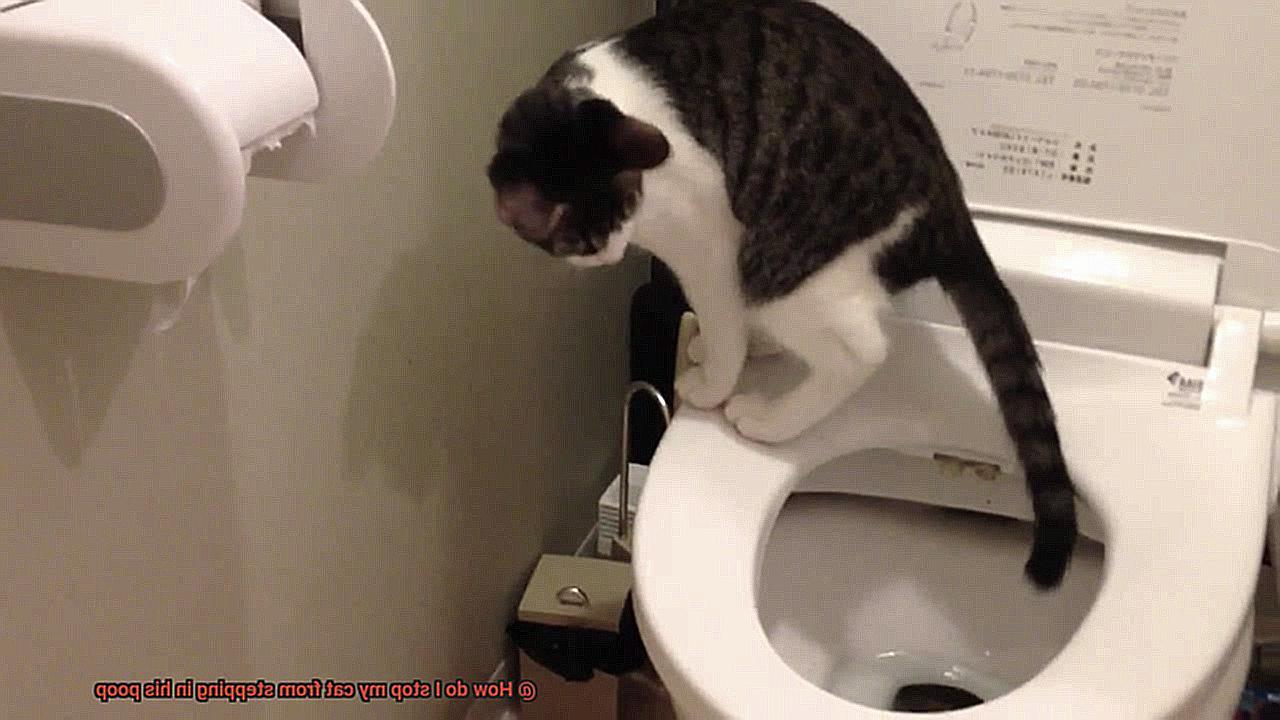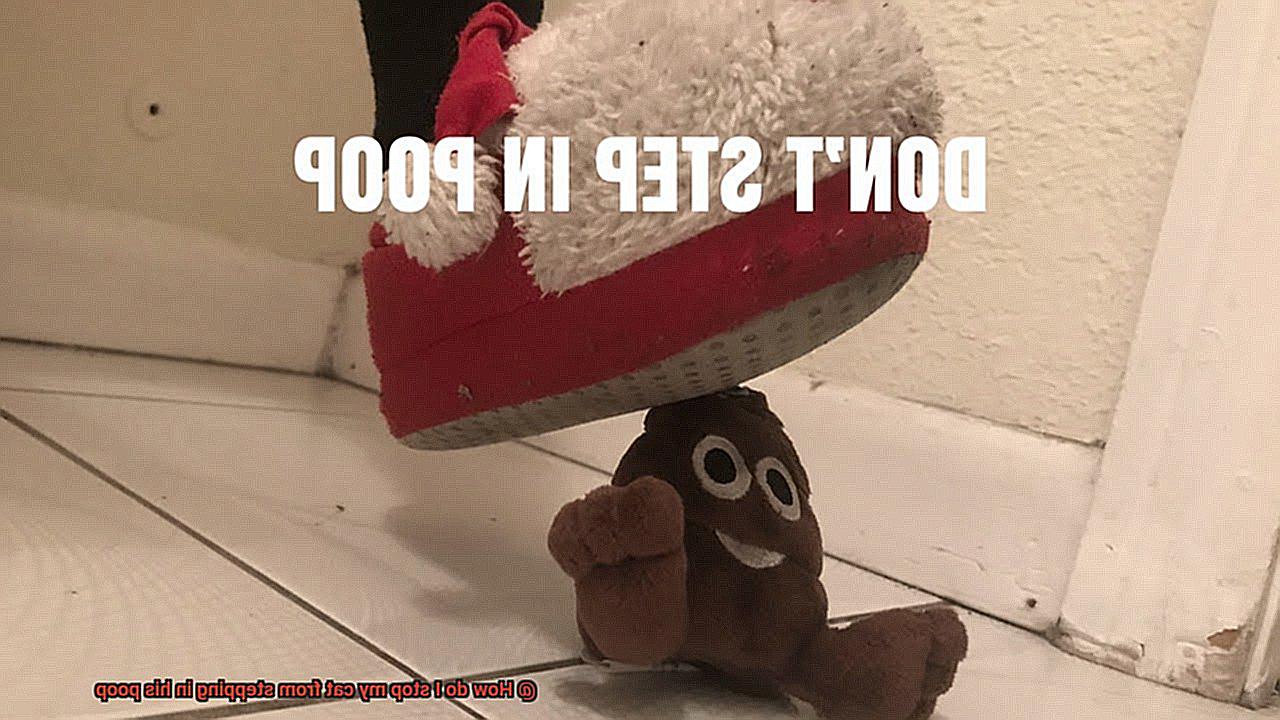Cats are known for their independence, but when it comes to avoiding stepping in their own poop, they need a little help from us. It’s not only unpleasant for you as a pet owner, but it can also be uncomfortable and unsanitary for your furry friend. Fortunately, there are several ways to tackle this problem. In this blog post, we’ll explore some effective solutions to stop your cat from stepping in his poop and offer tips to make the process easier.
One of the most common reasons why cats step in their poop is due to the size and shape of the litter box. If it’s too small or shallow, your cat may accidentally step in his waste. To avoid this issue, choose a litter box that’s big enough for your feline friend and has enough litter depth to allow him to bury his poop properly. Another solution could be switching to a different type of litter. Some varieties like clumping or scented litters can be challenging for your cat to move around and may cause him to step in his poop.
Moreover, keeping the litter box clean and scooped regularly is essential. A dirty litter box can discourage your cat from using it or cause him to accidentally step on his feces. By following these simple tips and ensuring that your cat has a clean and appropriately sized litter box with sufficient litter depth, you can prevent this unpleasant issue and keep both you and your beloved pet happy.
In conclusion, with some patience, persistence, and proper maintenance of the litter box, you can successfully stop your cat from stepping in his poop. Remember that every cat is unique; what works for one kitty might not work for another.
So, let’s get started.
How do I stop my cat from stepping in his poop
Choosing the Right Litter Box
Choosing the right litter box is crucial in preventing accidents and ensuring your cat’s comfort. So, what should you consider when choosing the perfect litter box for your feline friend?

Firstly, size matters. A litter box that is too small can lead to your cat stepping in their waste, which is not only unpleasant but can also lead to accidents outside the box. When choosing a litter box, ensure that it is at least one and a half times the length of your cat, with ample space for them to move around and dig comfortably.
Next, consider the type of litter box you choose. While covered litter boxes may seem like a good idea to contain odor, they can make it difficult for cats to enter and exit comfortably. Open litter boxes are usually the best option as they allow for easy access and ventilation, while giving your cat the freedom to move around without feeling cramped.

The type of litter you use can also impact your cat’s behavior when using the litter box. Some cats may prefer certain types of litter over others, so it’s important to experiment with different options until you find one that works best for both you and your cat. Clumping litter is often a popular choice as it makes cleaning the litter box easier, but some cats may not like the texture or smell. So, keep an open mind and try different types until you find the perfect fit.
Lastly, keeping the litter box clean and well-maintained is essential. Cats are naturally clean animals and may avoid using a dirty or smelly litter box. Regularly scooping out waste and replacing litter will help keep your cat’s litter box clean and inviting.
Trying Different Types of Litter
It’s messy, smelly, and can be a real pain to clean up. But what if we told you that trying different types of litter could be the solution to your problems? Here’s what you need to know to make the switch.
Firstly, it’s important to understand that not all cats are created equal when it comes to litter. Some cats may have a preference for certain textures or scents, while others may be sensitive to certain materials. By experimenting with different options, you can find the best fit for your furry friend.
One option to consider is litter with larger granules. This type of litter is less likely to stick to your cat’s paws, reducing the chance of them tracking it around the house. Another option is natural litter made from materials such as pine or corn, which can be softer on your cat’s paws and have a more pleasant scent.
If you’re feeling adventurous, scented litters could also be worth a try. Just be aware that some cats may find certain scents overpowering, which could lead to respiratory issues for both you and your feline friend.
When introducing a new type of litter, it’s crucial to transition gradually by mixing it with their old litter over a few weeks. Abrupt changes can cause stress and litter box aversion – something no one wants to deal with.
Placing a Mat or Tray Underneath the Litter Box
Mats and trays come in all shapes, sizes, and materials, so it’s important to choose one that fits your needs. Disposable mats are convenient, but reusable ones made from plastic, rubber, or fabric are eco-friendly and cost-effective in the long run. Some mats even have ridges or grooves that help trap litter or are waterproof to contain any accidents.
To ensure maximum effectiveness, choose a mat that fits snugly under the litter box and doesn’t slide around. This will prevent any litter or feces from spilling out onto your floors. Plus, mats that are machine-washable or easily wiped down with a damp cloth make cleaning a breeze.
Don’t forget to regularly clean and replace the mat or tray to prevent odor buildup and bacterial growth. Disposable mats should be replaced every few days, while reusable ones should be washed at least once a week.
Consulting with a Veterinarian
When you notice that your cat is stepping in their poop, it can be frustrating and concerning. But worry not, because consulting with a veterinarian is the first step towards resolving this issue.
During the consultation, your trusted veterinarian will take the time to understand your cat’s litter box habits, diet, and overall health. They may also perform a physical exam to check for any signs of illness or discomfort. By doing so, they can identify any underlying medical condition that may be causing the behavior and provide appropriate treatment.
Moreover, your veterinarian may recommend certain behavioral modification techniques to prevent your cat from stepping in their poop. These could include providing extra litter boxes, trying a different type of litter, or changing the type of litter box used.
They may also suggest environmental enrichment activities to keep your cat mentally stimulated and less likely to engage in undesirable behaviors.
gScZJmlZN5c” >
Conclusion
In conclusion, it’s crucial to understand that your feline friend stepping in their poop is not only unpleasant but can also be unsanitary and uncomfortable.
Luckily, there are several effective ways to tackle this problem. First, ensure that you have the right litter box size and type for your cat’s needs.
Second, try out different litters to find the best fit for your furry companion. Third, placing a mat or tray underneath the litter box can prevent any mess from spilling onto your floors.
Lastly, if the issue persists, consulting with a veterinarian can help resolve the problem. Keep in mind that every cat is unique, so what works for one may not work for another.







